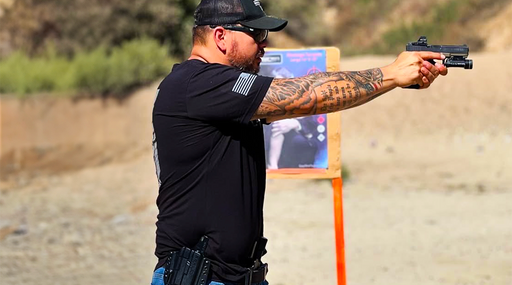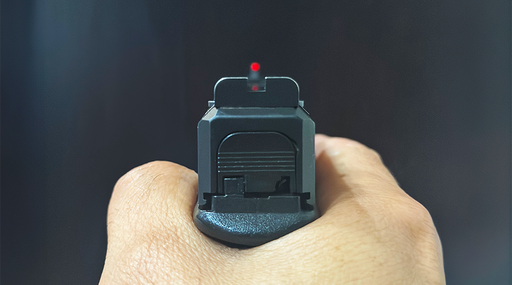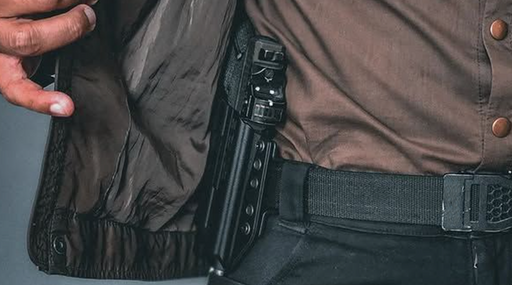If you’re reading this blog right now, chances are you’re already dedicated to responsible concealed carry, with your firearm in a safe gun holster, maintaining situational awareness as you go about the day, and generally being the courteous type who avoids trouble.
In addition to those good habits, hopefully you’ve taking some form of regular continuing education with your firearm. If you haven’t already, consider devoting some of that training time to learning to stop blood loss. While it may sound weird at first, consider that you’re already carrying a life-saving tool that, when fully deployed, causes a rapid loss in blood pressure to ease a tense situation! Why not be capable of stopping a too-rapid blood loss for yourself or a loved one as well?
A myriad of circumstances may cause life-threatening bleeding from an arm or leg. Being on the receiving end of a criminal attack is obviously one, even if you win. Even sans violent encounters, life and work are rife with risk. An inattentive moment with a kitchen knife, an object ejected from the spinning blades of a lawn mower, or a car accident are examples of momentary mishaps that can cause serious bleeding. For those equipped with very basic training and tools, along with willingness to use them, a bloody mishap doesn’t always have to spell disaster.
Those tools can expand survivability in places where guns aren’t allowed. At restrictive workplaces and public events, improvisation of weapons can become necessary in the face of violence or natural disaster. Indeed, this was proven in 2017 at the Mandalay Bay Casino massacre. Lives were saved by current and former service members who triaged, assigned bystanders to simple tasks like sitting atop victims and pressing a knee into the downed person’s armpit or torso-thigh juncture to slow blood loss until a tourniquet could be improvised.
Highways are another place where tourniquets can save a life until EMS can take over. In my isolated part of the world, I’ve twice grabbed the first aid kit that includes a tourniquet when encountering severe roadside accidents. Fortunately, I’ve not had to use it on another person.
I did, one day, prove the value of having that kit on my car’s headrest thanks to my own misfortune. While attempting to work on the ceiling of a shed, the object I’d stupidly chosen to stand on crumbled. As I fell, a hook, made of steel and welded to the wall, caught my upper arm. The substantial dump of blood that ensued was a pop quiz on mindset and emergency medical skills. Long story short, training works! While there are aspects of my response I would do better if I had the misfortune to repeat that drill, the experience cemented my belief in the value of blood-stop training.

Training for blood stoppage, based on the military model called Tactical Combat Casualty Care (TCCC), is not yet commonly offered to civilians, but it now exists in what appears to be a majority of police departments, and has saved lives of both officers and subjects. At this time, official civilian certifications and courses are difficult to find. However, police, EMTs, and ground combat troops who have served in the last decade are quite easy to find, and some of them are certified to teach TCCC skills. Others, not certified, may be able and willing to share knowledge. Seek training.
Everyday carry tools are important, and here is where instructors with a law enforcement/EMT background may be better suited to teach than military-only personnel. There are three tourniquets in common use today by military and police: the Special Operations Forces Tourniquet (SOF-T), Combat Application Tourniquet (CAT), and Stretch, Wrap, and Tuck Tourniquet (SWAT-T). The SOF-T is the most complicated of the three, and designed for application by a buddy. You want a tool that’s easy to apply on yourself. The CAT is well-suited to self- or buddy-application, but isn’t suitable for tiny child or dog limbs. The SWAT-T is easy to carry and can serve as both a compression bandage and tourniquet, but can be slippery and difficult to secure in the presence of a lot of blood. With a little practice, even a child can learn to apply any tourniquet, there’s really no excuse for you not to learn!
All three of these products have saved lives, domestically and abroad. Some of are offered at an apparent discount on sites like Ebay, but are really counterfeited or expired items. Extended exposure to heat or sun and shoddy, counterfeit construction can cause tourniquet failure. An experienced instructor can help you navigate both the appropriate tools for your needs as well as potential consumer pitfalls.
Then there’s the question of where to carry the new gear. It needs to be as accessible as possible. As I’ve stated, there’s a kit in an easy-to-grab fanny pack on the back of my vehicle’s headrest. There’s another in the safe room of my home. On the range and hiking, I wear a comfy ankle wrap that contains a SWAT-T and other first aid gear. Although even the selection of police gear for OWB tourniquet carry is sparse, the possibilities of crafting a solution for oneself are endless.
If you’re serious about saving a life with a gun, it only makes sense to be serious about stopping blood loss as well. Though branded resources for CHL types are few, the training does exist if you look or convince a qualified person to provide it.

Eve Flanigan is a defensive shooting and concealed carry instructor living in the American Southwest. Today she works full time as an instructor and writer in the gun industry. Flanigan loves helping new and old shooters alike to develop the skills needed to keep themselves and their loved ones safe.

























Leave a comment